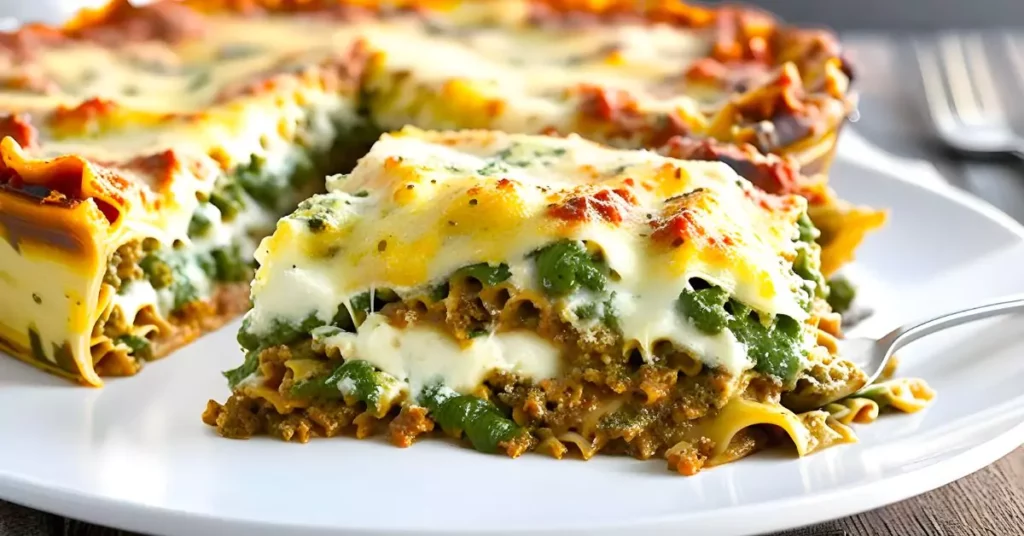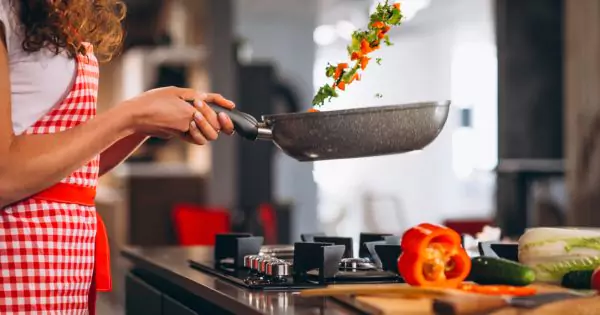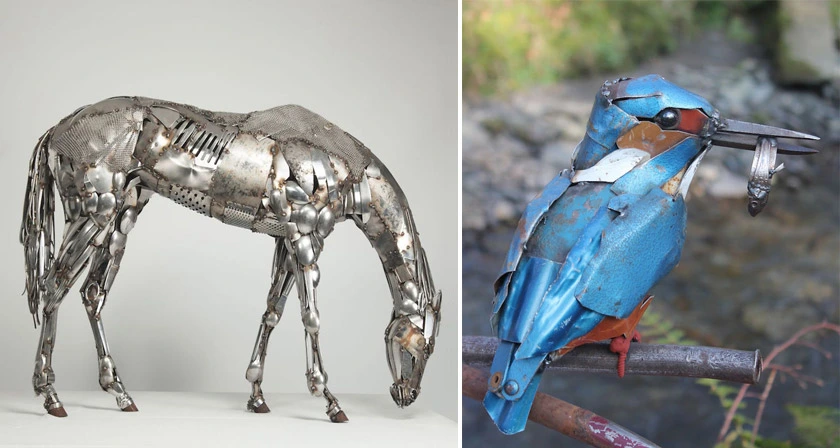
Welcome to a delightful culinary experience where health meets flavor! Our Salmon Steaks recipe is not just a dish; it’s a journey into the world of seafood cooking. Ideal for seafood aficionados and home cooks alike, this recipe brings the best of the ocean to your plate. Salmon steaks are known for their rich flavor, versatility, and incredible health benefits. Whether you’re a seasoned chef or new to cooking fish, this guide promises an easy, enjoyable, and nutritious cooking adventure. Get ready to transform your kitchen into a gourmet haven with this simple yet exquisite salmon steak recipe, complemented by the aromatic charm of compound butter.
The Benefits of Salmon: Nutritional and Culinary
Salmon is celebrated not only for its exceptional taste but also for its myriad health benefits, making it a favorite among health-conscious individuals and culinary enthusiasts.
1. Nutritional Profile of Salmon
- Rich in Omega-3 Fatty Acids: Salmon is an excellent source of omega-3 fatty acids, which are crucial for heart health, brain function, and reducing inflammation.
- High-Quality Protein: It provides high-quality protein, essential for muscle maintenance and overall health.
- Vitamins and Minerals: Salmon is rich in B vitamins, vitamin D, potassium, and selenium, supporting energy production, bone health, and immune function.
2. Culinary Flexibility
- Versatile in Cooking: Salmon’s rich, buttery texture makes it suitable for various cooking methods, including grilling, baking, and pan-searing.
- Flavor Compatibility: Its distinct flavor pairs well with a range of seasonings and ingredients, from simple herbs and spices to more elaborate marinades and sauces.
3. Salmon in Different Cuisines
- Global Appeal: Salmon is a staple in many cuisines, from Scandinavian to Japanese, showcasing its adaptability to different culinary traditions.
- Recipe Versatility: Whether it’s smoked, cured, or cooked fresh, salmon’s versatility allows it to fit into a wide array of dishes, from elegant entrées to casual meals.
4. Health Benefits of Regular Salmon Consumption
- Heart Health: Regular consumption of salmon is linked to improved cardiovascular health, thanks to its omega-3 content.
- Brain and Mental Health: Omega-3s in salmon also contribute to brain health, potentially reducing the risk of cognitive decline and improving mental wellbeing.
- Weight Management: The high protein content in salmon can aid in weight management by promoting satiety and reducing the overall calorie intake.
Step-by-Step Recipe Guide
Immerse yourself in the art of cooking salmon steaks, a dish that combines simplicity with elegance. Follow these detailed steps for a meal that’s sure to impress.
1. Gathering Ingredients
First, ensure you have the following:
- Salmon Steaks: 4 salmon steaks (1-inch thick, 6 to 8 ounces each)
- Seasoning for Salmon: 1 tablespoon Kosher salt, 2 teaspoons freshly ground black pepper, 1-2 teaspoons Garam masala (or another spice blend)
- Cooking Oil: 1 tablespoon olive oil
- Garnish: Lemon wedges for serving
For the Compound Butter:
- Butter: 4 tablespoons salted butter, softened
- Garlic: 1-2 minced garlic cloves
- Herbs: 2-3 tablespoons of chopped fresh herbs (choices include chives, oregano, dill)
- Additional Seasoning: 1 teaspoon Kosher salt and ½ teaspoon freshly ground black pepper, adjusted to taste
2. Seasoning the Salmon
- Lay the salmon steaks on a clean surface. Sprinkle each side of the steaks evenly with the Kosher salt, freshly ground black pepper, and Garam masala. Ensure a uniform coating for a balanced flavor in every bite.
3. Heating the Pan or Grill
- For pan cooking, place a large skillet over medium-high heat. Add the olive oil, swirling it around to coat the bottom of the pan evenly. Wait until the oil is hot but not smoking.
- If grilling, clean the grill grates, oil them lightly, and heat the grill to medium-high. This preparation prevents sticking and ensures beautiful grill marks.
4. Cooking the Salmon
- Carefully place the salmon steaks in the skillet or on the grill. Avoid overcrowding to ensure even cooking and a good sear. Cook the steaks for 3-5 minutes without moving them. This step is crucial for creating a well-seared crust.
- Gently lift an edge to check if they’ve got a golden-brown crust before flipping. If they stick, give them a bit more time.
5. Making the Compound Butter
- In a small bowl, mash the softened butter with the minced garlic and chopped herbs. Season with Kosher salt and black pepper. The compound butter should be uniform in texture and fragrant.
6. Completing the Cooking
- Once you flip the salmon steaks to the other side, if using a skillet, spoon the prepared compound butter over them. The butter will melt, infusing the fish with its flavors.
- If grilling, wait until you remove the salmon from the grill. Then, top each steak with a dollop of compound butter, allowing it to melt over the warm fish.
7. Final Touches and Serving
- The salmon is perfectly cooked when its center is opaque, and it flakes easily with a fork. Avoid overcooking to maintain moisture and tenderness.
- Serve the salmon steaks immediately, garnished with fresh lemon wedges. Squeeze the lemon over the fish right before eating for a burst of zesty flavor.
Cook’s Note
For those preferring an oven-roasted method, preheat your oven to 400 degrees F. Place the seasoned salmon steaks in a baking dish and roast for 15-20 minutes. The cooking time may vary slightly based on the thickness of the steaks.
Recipe Variations and Personalization
Salmon steaks are wonderfully versatile, allowing for numerous customizations to suit various tastes and dietary requirements. Here are some creative ideas to personalize this classic recipe.
1. Alternative Seasonings
- Spice Blends: Instead of Garam masala, experiment with other spice blends like Cajun seasoning, a mix of dill and lemon pepper, or a simple blend of garlic powder and paprika for a different flavor profile.
- Marinades: For a more intense flavor, marinate the salmon in a mixture of soy sauce, ginger, garlic, and honey before cooking.
2. Cooking Method Variations
- Broiling: For a crispier top, try broiling the salmon steaks. Place them on a broiler pan and broil for about 10 minutes, keeping a close eye to avoid burning.
- Baking with Foil: Wrap the seasoned steaks in foil with a splash of white wine and bake. This method steams the fish, yielding a moist and tender texture.
3. Compound Butter Twists
- Citrusy Butter: Add grated lemon or orange zest to the compound butter for a fresh, citrusy kick.
- Herb Variations: Experiment with different herbs like basil, tarragon, or cilantro for a new flavor dimension in the butter.
4. Accompaniments and Sides
- Vegetable Pairings: Serve the salmon with grilled asparagus, sautéed spinach, or a fresh garden salad for a balanced meal.
- Starch Options: Complement the dish with a side of garlic mashed potatoes, quinoa, or a wild rice blend.
5. Dietary Adjustments
- Gluten-Free: Ensure all your seasonings and marinades are gluten-free. Serving with gluten-free sides like rice or quinoa keeps the entire meal celiac-friendly.
- Dairy-Free Compound Butter: Use a dairy-free butter alternative to make the compound butter suitable for lactose-intolerant individuals.
6. Presentation Flair
- Garnish Creatively: Garnish with edible flowers, thinly sliced lemon rounds, or a sprinkle of toasted sesame seeds for an elegant presentation.
- Plating Technique: Serve the salmon on a bed of mixed greens or with a drizzle of balsamic reduction for a restaurant-style look.
These variations and personalizations allow you to adapt the salmon steaks recipe to fit different tastes, dietary needs, and occasions, making it a versatile choice for any meal.
Understanding and Making Compound Butter
Compound butter, a simple yet transformative addition to many dishes, pairs exceptionally well with salmon steaks. Understanding its role and how to make it can elevate your culinary creations.
1. What is Compound Butter?
- Definition: Compound butter, also known as flavored or herbed butter, is essentially butter that has been mixed with additional ingredients such as herbs, spices, garlic, and other flavorings.
- Culinary Uses: It’s used to add depth and richness to dishes, melting over warm food to release its infused flavors. It’s particularly popular in grilling and roasting, where it adds a burst of flavor to meats and vegetables.
2. Making Garlic-Herb Compound Butter for Salmon
- Ingredients: Start with 4 tablespoons of softened salted butter. Choose fresh herbs like dill, chives, or oregano, finely chopped, to complement the salmon. Add 1-2 minced garlic cloves for a punch of flavor.
- Preparation: In a bowl, combine the softened butter with the minced garlic and chopped herbs. Season with 1 teaspoon of Kosher salt and ½ teaspoon of freshly ground black pepper. Mix until all the ingredients are well incorporated.
- Flavor Variations: Feel free to experiment with other ingredients like citrus zest, chili flakes, or a dash of your favorite spices.
- Storage: If not using immediately, roll the compound butter into a log using parchment paper and refrigerate or freeze. Slice off rounds as needed for cooking.
3. Using Compound Butter with Salmon Steaks
- Cooking Application: After flipping the salmon steaks, add dollops of this butter to the pan. As it melts, it bastes the salmon, adding layers of flavor.
- Serving Suggestion: For grilled salmon, place a slice of the chilled compound butter on top of each hot steak right after it comes off the grill. The residual heat will melt the butter, creating a deliciously flavored topping.
4. Benefits of Using Compound Butter
- Enhanced Flavor: Compound butter introduces an extra dimension of taste, melding the richness of butter with the freshness of herbs and the zest of seasonings.
- Versatility: It can be used with a variety of dishes, from steaks and seafood to vegetables and bread.
Understanding and mastering the art of making compound butter can significantly enhance your cooking, adding gourmet touches to everyday meals.
Storage and Reheating Tips
Proper storage and reheating are essential to enjoy your salmon steaks to the fullest, even after the initial meal. Here’s how to keep your leftovers both safe and tasty.
1. Storing Leftover Salmon Steaks
- Cooling Down: Allow the salmon to cool to room temperature before storing. This prevents bacterial growth and maintains the texture.
- Refrigeration: Place the cooled salmon steaks in an airtight container. They can be stored in the refrigerator for 2-3 days without losing their quality.
- Avoiding Dryness: To help retain moisture, you can wrap the steaks in parchment paper before placing them in the container.
2. Reheating for Optimal Flavor
- Oven Method: The best way to reheat salmon is in the oven. Preheat it to 350 degrees F (175 degrees C). Place the salmon on a baking sheet and heat for about 5-10 minutes. Covering with foil can prevent it from drying out.
- Avoiding the Microwave: Microwaving is not recommended as it can cause the salmon to become dry and overcooked.
3. Freezing Cooked Salmon
- Freezing Instructions: If you need to store the salmon for longer, wrap the cooled steaks tightly in plastic wrap and then in aluminum foil. Place them in a freezer-safe bag and freeze.
- Thawing and Reheating: Thaw in the refrigerator overnight before reheating in the oven. Do not refreeze once thawed.
4. Refreshing the Dish Upon Reheating
- Reviving Flavor: If the salmon feels a bit dry after reheating, a squeeze of fresh lemon juice or a pat of butter can help revive its flavor.
- Serving Suggestions: Consider serving reheated salmon over a salad or alongside fresh vegetables to complement its flavors.
By following these storage and reheating tips, you ensure that your salmon steaks remain as enjoyable as when they were first cooked, preserving their taste and texture.
FAQs
1. How Do I Know When the Salmon Steaks Are Perfectly Cooked?
Perfectly cooked salmon steaks will have an opaque center and will flake easily with a fork. The internal temperature should reach 145 degrees F (63 degrees C). It’s crucial to avoid overcooking to maintain moisture and flavor.
2. Can I Use Frozen Salmon Steaks for This Recipe?
Yes, you can use frozen salmon steaks. Thaw them overnight in the refrigerator before cooking. Ensure they’re completely thawed for even cooking.
3. What Are the Best Herbs to Use in the Compound Butter?
Herbs like dill, chives, and oregano pair well with salmon. You can experiment with different combinations to find your preferred flavor profile.
4. Is It Necessary to Remove the Skin from the Salmon Steaks?
It’s not necessary to remove the skin. Cooking salmon with the skin on helps hold the flesh together and can be easily removed after cooking if desired.
5. How Can I Avoid Sticking When Cooking Salmon in a Pan?
Ensure the pan is hot before adding the oil, and then the salmon. A hot pan and sufficient oil help create a sear that prevents sticking.
6. Are There Any Health Benefits Specific to Salmon Steaks Compared to Other Cuts?
Salmon steaks are cut across the fish, including the spine, which means they contain more bone. The bones can add flavor during cooking and may offer additional nutrients like calcium.
7. Can I Grill Salmon Steaks Instead of Pan-Cooking Them?
Absolutely! Grilling over medium-high heat gives the salmon a delightful smoky flavor. Just be sure to oil the grill grates to prevent sticking.
Conclusion
As we conclude our culinary journey with salmon steaks, it’s evident that this dish offers a unique blend of simplicity, elegance, and flavor. Whether you’re a seasoned chef or a beginner in the kitchen, salmon steaks provide an opportunity to explore the rich potentials of seafood cooking.
We’ve explored the versatile and nutritious world of salmon, walking through a detailed guide on preparing mouth-watering salmon steaks complemented by aromatic compound butter. We also delved into various recipe variations and personalizations, ensuring that this dish can be enjoyed by a wide array of palates and dietary preferences.
The Joy of Cooking Salmon
Cooking salmon steaks is more than just a process; it’s an art that combines technique with creativity. The satisfaction of achieving perfectly cooked, flavorful salmon steaks is a testament to the pleasures of home cooking. It’s a dish that not only satisfies the taste buds but also contributes positively to your health.
Final Thoughts
We hope this guide inspires you to include salmon steaks in your cooking repertoire. Whether for a special occasion or a regular weekday meal, this dish is sure to bring a touch of gourmet to your dining table. The balance of health benefits and delightful flavors makes salmon steaks a perfect choice for those who love to combine nutritious eating with exquisite taste.
Cooking is an ongoing journey of discovery, and dishes like salmon steaks are wonderful milestones along the way. Happy cooking, and enjoy the rich, satisfying flavors of your homemade salmon steaks!

























































































































